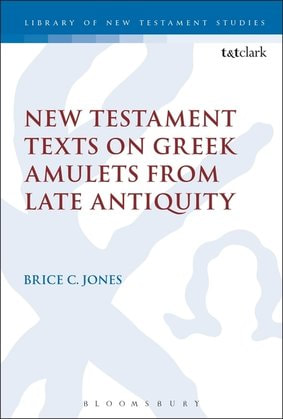|
I am editing a Sahidic literary papyrus fragment and need help deciphering an interlinear addition. Can anyone make out the letters following the words ASH PE ("what is")? The kappa from the top line (from JWKE) and the phi from the lower line (from COPHOC) intrude into the interlinear addition, so don't let that throw you off. It looks to me something like ASH PE PN.D. – but I can't make heads or tails of it. I don't think we are dealing with a nomen sacrum for "spirit" since there is no overlining. I know I have some Coptic readers out there, so I would be grateful for any of your thoughts. (Click on the image to enlarge.)
0 Comments
One feature of the Nag Hammadi codices that has always fascinated me is the leather covers in which the papyrus codices were bound. According to the traditional story, the Nag Hammadi codices were discovered in 1945 by a native Egyptian while looking for sabakh, a natural fertilizer. It is claimed that he found them in a jar in the ground at the base of the Gebel al-Tarif. (On the question about this discovery, see most recently Nicola D. Lewis and Justine A. Blount, "Rethinking the Origins of the Nag Hammadi Codices," JBL 133.2 [2014]: 399-419.) Below are two images (open and closed) of the remarkably well-preserved cover of Codex IX, which was found intact. According to Birger Pearson, the papyrus codex was "cut out of the cover" in order to be preserved and mounted in between glass (Nag Hammadi Codices IX and X; [NHS 15; Leiden: Brill, 1981], 1). James M. Robinson offers a full analysis of this cover in the preface to the facsimile edition of Codices IX and X (The Facsimile Edition of the Nag Hammadi Codices: Codices IX and X [Leiden: Brill, 1977], 4). This cover was apparently made of sheepskin and goatskin and belongs typologically, according to Robinson, in a group together with Codices II, VI, and X. As with most of these leather covers, this one was reinforced with papyrus fragments (known as cartonnage), and those papyri have been published as well. What is interesting about the cartonnage is that they are datable and thus provide a terminus a quo (starting point) for Codex IX. The photos below were taken by Jean Doresse and may be found—along with many other excellent images of the Nag Hammadi codices, covers, cartonnage, etc.—at Claremont College's Digital Library. When we think of the Nag Hammadi codices, we normally think of the papyrus codices and their texts. However, these are fascinating pieces of 4th century Egyptian material culture that deserve to be studied and analyzed.
Post-scriptum: While the Nag Hammadi codex covers are remarkable, they are not unique. We have several such covers from other manuscripts; see some of them here. Can you name this New Testament manuscript? What does the isolated text toward the bottom of this papyrus say? I will wait a few days before updating with the answer. Leave your answers, comments, and/or questions below.
 Philip W. Comfort, A Commentary on the Manuscripts and Text of the New Testament (Grand Rapids: Kregel, 2014). 416 pp. $30. May be purchased here. Description: "An up-to-date commentary on all the significant manuscripts and textual variants of the New Testament. This small and insightful volume is an essential resource for the committed student of Greek New Testament. Using the same trim size as UBS and NA28 Greek New Testaments, this reference commentary, based on the latest research, is designed to aid the reader in understanding the textual reliability, variants, and translation issues for each passage in the New Testament. Unlike any other commentary, this volume contains commentary on actual manuscripts rather than a single version of the Greek New Testament. There are nearly 6,000 existing manuscripts, and just as many textual variants, with thousands of manuscripts having been discovered since the time of the King James Version. This commentary is filled with notes on significant textual variants between these manuscripts." |
Archives
December 2020
Categories
All
|




